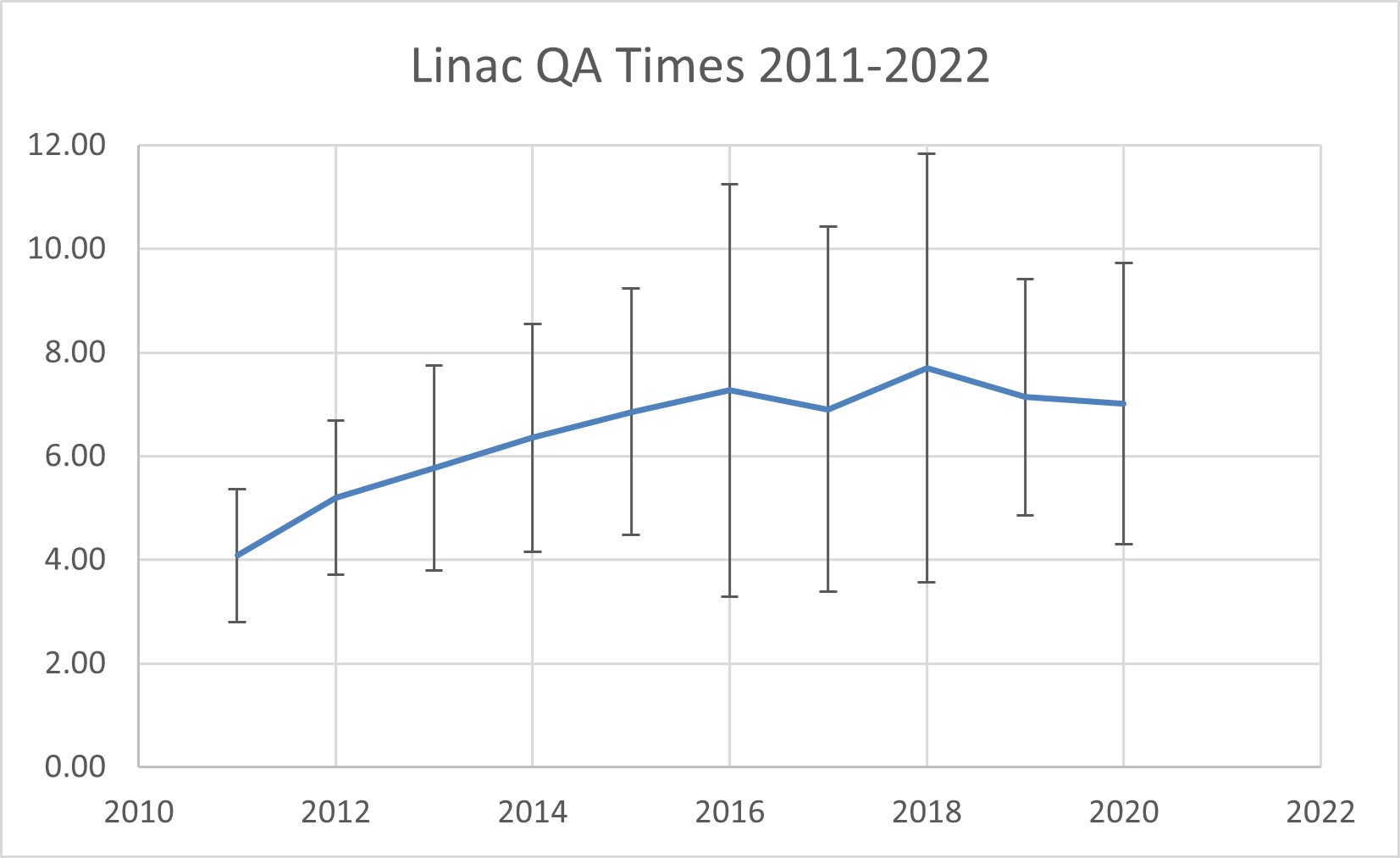10-Year review of Linac QA Times at a large cancer centre
Steven Weston,
United Kingdom
PO-1540
Abstract
10-Year review of Linac QA Times at a large cancer centre
Authors: Steven Weston1, Caroline Timms1, James Briston2, Ashraf Esmail1
1Leeds Cancer Centre, Medical Physics and Engineering, LEEDS, United Kingdom; 2Leeds Cancer Centre, Medical Physics and Engineering, Leeds, United Kingdom
Show Affiliations
Hide Affiliations
Purpose or Objective
Quality control of linear accelerator performance and safety is an essential part of a radiotherapy services overall quality assurance programme. The quality control process must adapt to meet the needs of developing technology and changing clinical processes. This review seeks to identify the changing resource implication of linear accelerator quality control over a period from 2011 - 2020.
Material and Methods
At Leeds Cancer Centre linear accelerator maintenance and quality assurance tasks are recorded in the EquipAM assest management system. The record for the scheduled monthly quality assurance task is recorded as having started when the maintenance tasks are finished, and as having finished when the quality control tasks are finished and the machine is handed over for clinical use. This includes anytime taken to rectify any faults identified during the quality control process, but is a more useful measure in terms of the scheduling the time required for quality control than the tiem required to solely complete the quality control tasks.
The time taken for qaulity control is reviewed on an annual basis in order to allocate an appropriate amount of time in the maintenance and quality control schedule.
Results

Figure 1 Linac QA times over the period 2011 to 2020 for a fleet of 12 linacs. Error bars show one standard deviation in the QA times.
Figure 1 shows that during the period analysed QA times rose from 4 hrs to 7 hrs. The standard deviation in the QA times rose from 1.5 hrs to 2.5 hrs but during the period 2016-2018 it was approximately 4 hrs.
Conclusion
Linac QA is a significant overhead in providing a radiotherapy service. It is essential to regularly review the time taken for linac QA to ensure that sufficient resources are allocated and the impact of QA on the capacity of the radiotherapy fleet is understood. Over the period analysed there was a significant increase in the complexity of the technology and the compexity and variety of the clinical services provided, notably IMRT, 3D IGRT, high dose rate beams and hypofractionated stereotactic treatments. With the introduction of these new technologies there was a concomitant increase in the time required for QA (3 hrs), and the standard deviation in the time required for QA (1 hr). During the period 2016-2020 there was a technology refresh from Elekta Synergy machines to Elekta Versa HD machines, this mix of equioment led to the standard deviation rsing to 4 hrs during the period 2016-2018 before falling to 2.5 hours by 2020 by which time the fleet was predominantly Versa HD.
Improvements in radiotherapy treatment have been shown to require an increase in the time required for QA. In a resource limited environment it is essential to ensure that the QA process is as efficient as possible. To ensure this technology used must be as efficient as possible, the staff must be well trained and QA requirements reviewed to ensure that the individual QA processes maximise the safety of the treatments